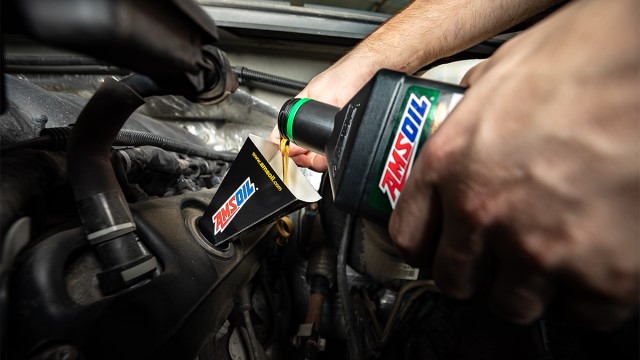AMSOIL: 5 Oil Myths Busted
Everybody Just Stay Cool
Motor oil has drawn more than its fair share of myths. Its central role in vehicle longevity and performance has been understood since the beginning of the auto age. But, as generations have passed, motor oil myths have been born and survived, even as vehicle and motor oil technology have evolved. Some persist to this day. Here are the top five motor oil myths followed by our mythbusting facts of each case.

Myth 1: Motor Oil Must Be Changed Once It’s Turned Black
Fact: Not necessarily. Motor oil naturally darkens due to heat cycles as your engine runs. Additionally, the detergent and dispersant additives hold contaminants in suspension and prevent them from adhering to engine parts, which can turn the oil black.
In fact, motor oil that has turned black can be a sign that the additives are doing their job. Follow the oil-change guidelines for your vehicle to know when to change oil. If you want to be more precise, used oil analysis will also tell you precisely when the oil needs to be changed.
This post explains why motor oil turns black and whether that signals the time for a change.
Myth 2: You Must Change Oil Every 3,000 miles (4,800 km)
Fact: Quick-lube chains adopted and amplified this message in the 1970s to keep customers coming back.
Today, motor oil and engine technology are far more advanced.
Automakers recommend longer oil-change intervals, with many up to 10,000 miles (16,000 km) and longer, thanks to oil-life monitoring systems. And premium synthetic motor oils, like AMSOIL Signature Series Synthetic Motor Oil, last up to 25,000 miles (40,000 km) or one year.
Check out this post for more about the 3,000-mile oil-change myth.
Myth 3: You Can’t Mix Synthetic and Conventional Oil
Fact: Synthetic and conventional motor oil are made of the same basic components: base oils and additives.
Although the base oils and additives in synthetic oil are superior to their conventional counterparts, they are compatible and can safely be mixed. In fact, that’s what synthetic-blend motor oil is – synthetic and conventional oil already mixed for you.
While safe, we recommend avoiding it if possible; mixing the two detracts from the performance of the synthetic oil.
This post provides a deep dive on whether it’s safe to mix synthetic and conventional oil.
Myth 4: Once You Switch to Synthetic Oil, You Can’t Go Back
Fact: It’s perfectly safe to switch from conventional oil to synthetic oil and back again. The two are compatible and doing so won’t harm your engine.
A better question might be: after using synthetic motor oil and experiencing its improved performance capabilities, why would you switch back?
Myth 5: Synthetic Oil Causes Engines to Leak Oil
Fact: In older, poorly maintained engines, deposits and varnish can “paper over” worn, cracked seals. The improved detergents in synthetic oil sometimes remove these deposits and expose the worn seals underneath.
In some instances, that can lead to leaks. Here’s the distinction: the oil didn’t cause the problem, rather the worn-out seals did. In fact, a good synthetic oil, like AMSOIL synthetic motor oil, conditions seals to help them remain pliable to prevent leaks. Therefore, the best solution is to use a quality synthetic motor oil before seals reach that condition.
COMPANY DETAILS |
 |
|
Company |
AMSOIL |
|
Website |
|
|
Connect |
    |
|
Contact |
|
|
Phone |
(800) 956-5695 |
|
Address |
925 Tower Ave. |
| Superior, WI 54880 |
ABOUT AMSOIL®
AMSOIL offers a broad range of automotive and industrial lubricants and filtration equipment which exceed industry performance specifications by a wide margin. AMSOIL has also continued to set new industry standards for motor oil performance, quality and consistency. AMSOIL founder and industry pioneer Al Amatuzio built his company on the same principles that defined his career as a jet-fighter squadron commander – excellence, integrity and strong leadership. In 1972, the breakthrough came. AMSOIL 10W-40 Synthetic Motor Oil, the result of years of research and inspired by aerospace technology, became the first synthetic motor oil in the world to meet American Petroleum Institute service requirements.
